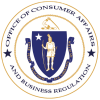- Office of Consumer Affairs and Business Regulation
One common acquisition of many incoming college students is a personal credit card. For some, a first credit card is a sign of independence and autonomy of one’s finances; for others, it’s only to be used in the event of an emergency or to pay bills. Either way, if you’ve never had a credit card, it’s best to make sure you understand both the risks and benefits of plastic.
The first hurdle some young people face in search of personal credit cards is a lack of credit. Credit, in the easiest terms, is borrowed money from a lender or creditor which is paid back at specific times. The better job you do at paying back the money, the more credit you’re likely to be issued.
Some lenders require you to have credit before issuing a new credit card. So what can young people without any credit do? Many lenders offer a student credit card option. Student credit cards are designed specifically for first-time credit users, and usually has a relatively low spending limit. Most student cards don’t charge an annual fee, which can be very beneficial to a student with limited funds. Just remember, you need to be at least 18 years of age before you can receive a credit card.
If you are not currently a college student and have a limited credit history, you can still get a credit card. Cards are either secured or unsecured. Secured cards usually require a cash deposit, imposing a required fee equal to or greater than the credit limit.
You can also build credit by being an authorized user on someone else’s account (for instance, your parents). Being an authorized user means you can use the credit card but you’re not primarily responsible for paying the balance. This can be helpful to those looking to build their credit because the account history may be reported on your credit report. Conversely, it can be problematic to you if the card owner doesn’t keep up with payments as the negative reporting will be added to your credit report. Authorized users may be under age 18.
In order to apply for a credit card, you must provide your name, birth date, address and time at that residence, Social Security number/Individual Taxpayer Identification Number, and a viable source of income. You should also know your credit score (if you have one).
It’s important to also shop around before applying. Don’t just apply for the first card you come across. Compare Annual Percentage Rate (APR) or the interest rate; fees; introductory rates; rewards programs, if applicable; monthly minimum payments; and overall terms and conditions. Many cards offer competing rewards such as cash back on certain purchases or points for airline travel. Other cards don’t offer rewards instead they offer a lower Annual Percentage Rate (APR) or zero interest for a specified length of time. It’s important you review all your options and know which card works best for you.
Once you have received a card:
- Make sure you are making your payments on time and above the minimum amount due. Not doing so can be an easy way to ruin your credit. Organize your spending to ensure you have money to cover your credit charges.
- Monitor your credit statements: Frequently check and monitor your statements. If you can’t pay off the balance, knowing how much you owe can help keep your spending in check. Reviewing your credit statements also helps reduce the risk of fraud. If you see charges that are not yours, immediately contact your lender.
- If your card is compromised, make sure the lender replaces it with a new card. You should also consider changing the passwords to any online accounts associated with your credit card.
- Maintain a low credit utilization ratio. The credit utilization ratio is the percentage of funds you use per payment cycle. The lower you are able to keep this, the better your credit will be. Most experts agree a total credit limit under 30% can greatly improve your credit score.
- Practice diligence when spending and avoid cash advances. Just because you have available credit does not mean you should spend it. Utilize your credit card on mostly need based purchases, don’t open too many lines of credit, and don’t leave significant balances on them. Consumer debt can add up quickly! For instance, let’s say you have a balance on your card of $500. If the interest rate is 18.9% and you monthly minimum payment is $25.00, it will take you approximately two (2) years to pay it off. That debt could also be in addition to your monthly rent, car, and utility payments!

